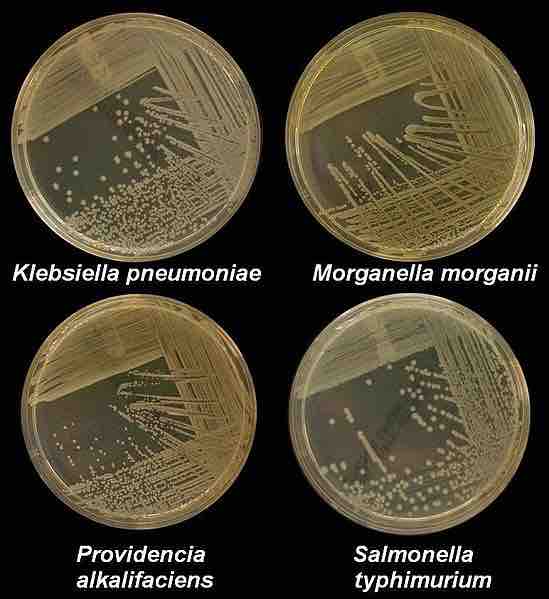The process of identifying infectious diseases is complex and requires identification of the agent through direct or indirect means. In regards to many microbial diseases, it is often difficult to diagnose an individual based on clinical presentation. As such, further testing is required. The methods used to diagnose microbial disease include microbial culture, microscopy, biochemical tests, and molecular diagnostics.
Microbial Culture
The first tool in diagnosing microbial disease is microbial cultures. The sample is obtained from the infected individual and tested for the presence of an infectious agent or microbe that is capable of growing in specific media. It is critical to isolate the infectious agent in a pure culture containing only the infectious bacteria. The most common method to isolate individual cells and produce a pure culture is to prepare a streak plate. The streak plate method is a way to physically separate the microbial population, and is done by spreading the inoculate back and forth with an inoculating loop over the solid agar plate. Upon incubation, colonies will arise and single cells will have been isolated from the biomass.

Common bacteria that cause disease in humans
This represents four nutrient agar plates with various bacterial species represented. The use of plates for microbial culture aid in identification of microbes based on size, shape, colony formation and nutrient requirement.
It is established that most pathogenic bacteria can be grown on nutrient agar, and the addition or subtraction of specific nutrients can aid in further identification. The use of microbial cultures is common to help in the clinical identification of pathogenic microbes. However, there are specific classes of microbe that require culture within live animals. The bacteria Mycobacterium leprae is such a microbe, as it can only be cultured in animals.
There are also specific types of infectious agents that require the use of xenodiagnosis to promote growth. The parasite responsible for Chagas disease, Trypanosoma cruzi, requires a vector for diagnosis. For example, an uninfected reduviid bug is used to feed from an individual suspected of having Chagas. Once the blood is taken, the bug will be analyzed for Trypanosoma cruzi growth.
Microscopy
An additional tool utilized for microbial disease diagnosis is microscopy. To ensure proper identification of a pathogen, microscopy, in combination with biochemical staining techniques, is often used to ensure definitive identification. Biochemical staining techniques that are used to aid in identification include stains such as Giemsa, crystal violet, and other stains that help distinguish between gram positive and gram negative.
Biochemical Tests
Biochemical tests are also used to help in microbial disease diagnosis. They will specifically test for metabolic and enzymatic products that an infectious agent may use. Biochemical tests will also test for fermentation products, acids, alcohol or gases that may be products of metabolic pathways.
Molecular Diagnostics
The identification of infectious agents is now often done by using molecular based techniques such as polymerase chase reactions (PCR). PCR allows for the identification and testing for nucleic acids which are specific to the infectious agent. The need of an infectious agent to amplify its own nucleic acids to ensure successful infection has allowed us to use PCR to detect the presence of these nucleic acids. In combination with the advances made in genome sequencing, the tools and information needed to establish PCR as the gold-standard for diagnosing microbial disease is present.